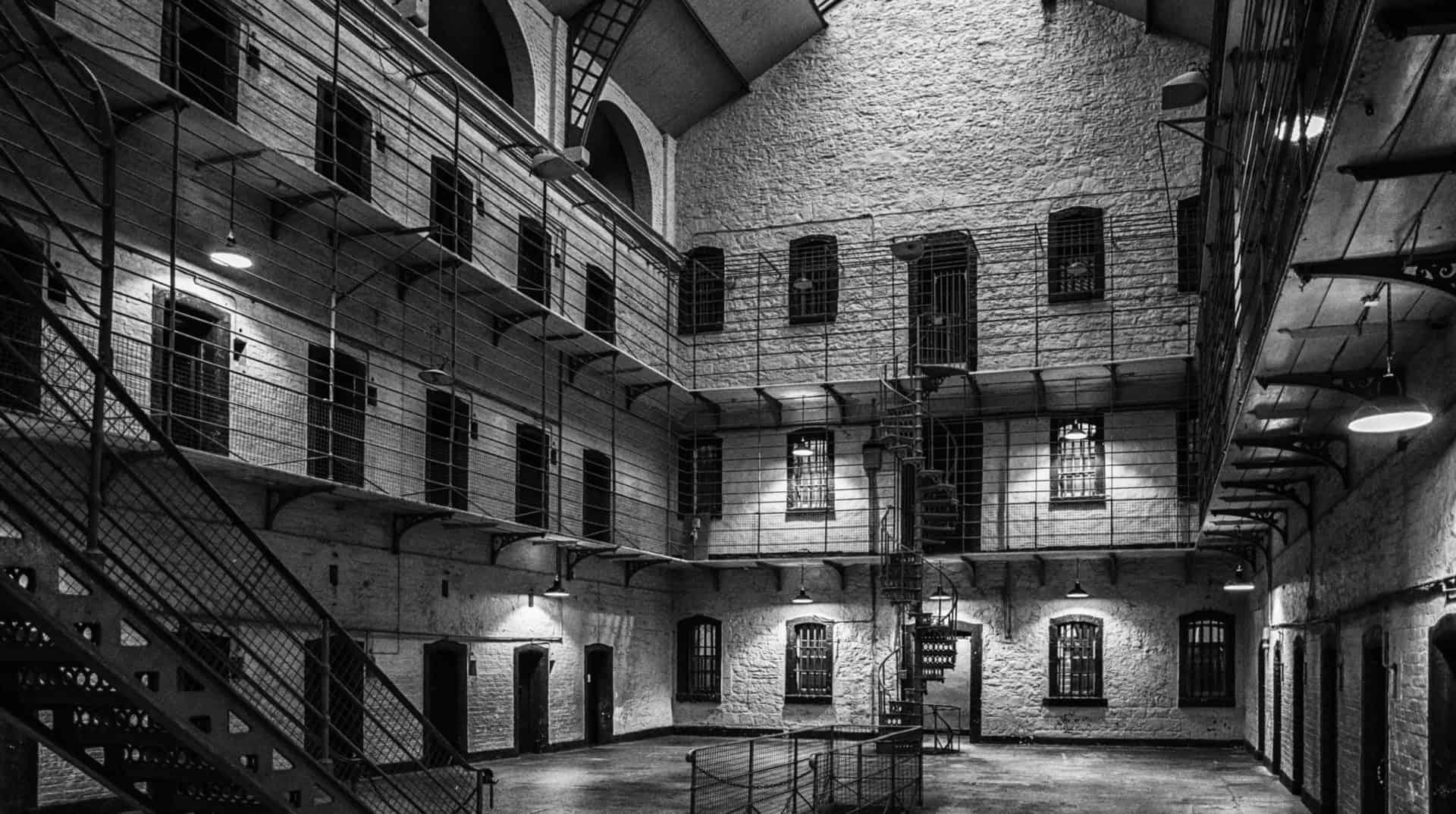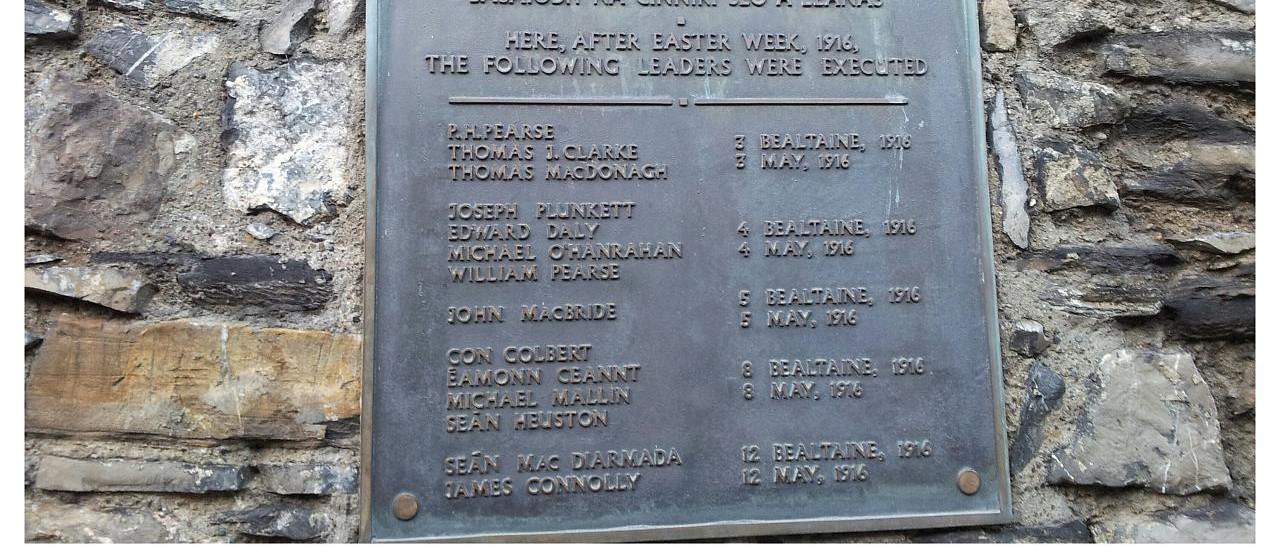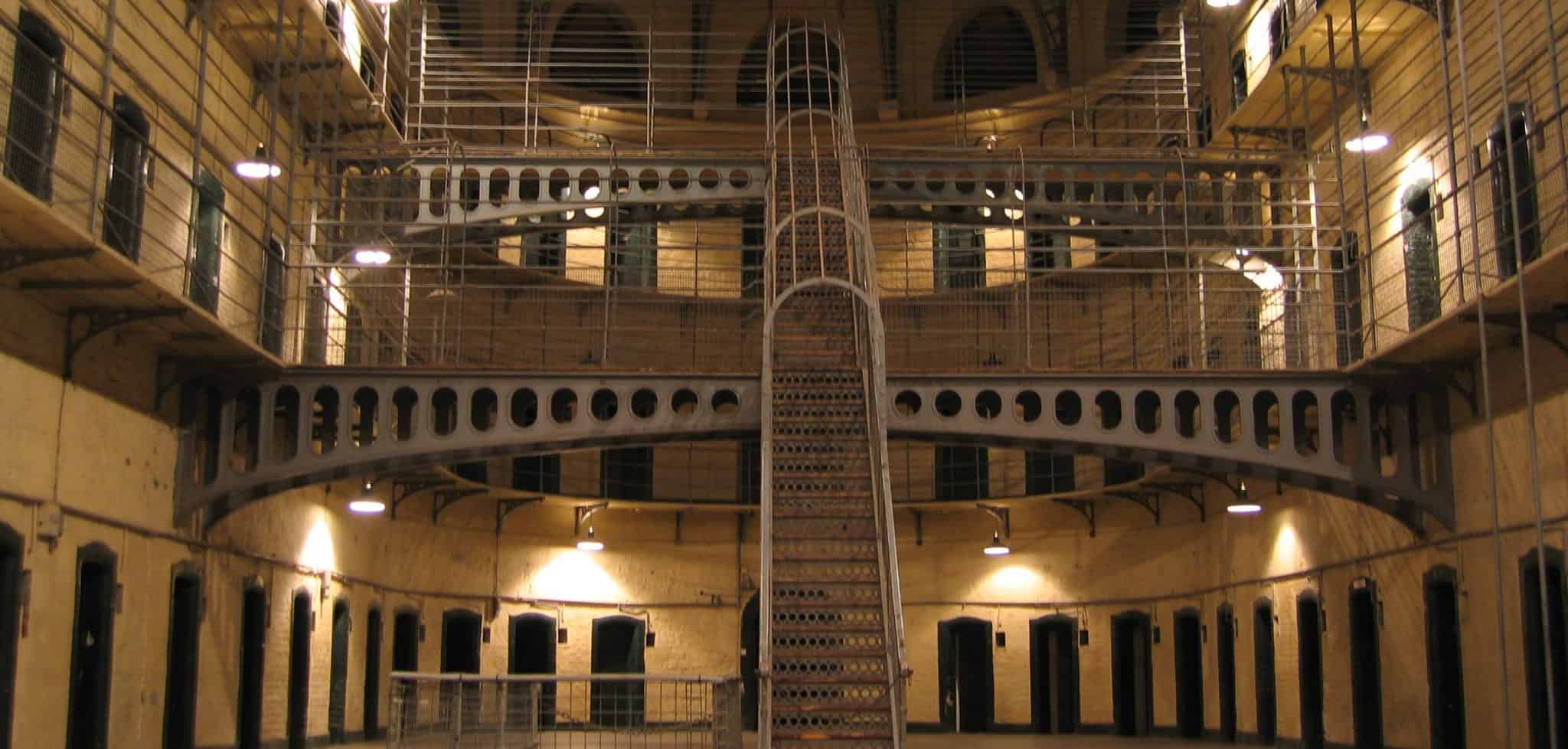Kilmainham Gaol; Former Prison Turned Tourist Attraction

Updated On: May 09, 2024 by Ciaran Connolly
One of the city’s most historic attractions is located in Dublin, the Kilmainham Gaol. It’s currently considered one of the largest unoccupied gaols in Europe. Many Irish revolutionaries of the 1916 Easter Rising were imprisoned and executed here when it was used as a working prison.
It’s a visitor’s museum where people can learn about its remarkable history and tour its facilities, much of which has remained the same since its opening.
Kilmainham Gaol offers a fascinating part of Irish history to uncover if you’re looking for things to do in Dublin. Take a guided tour of Kilmainham Goal to experience what life was like for prisoners, learn how they lived, and hear incredible stories.
Table of Contents
History of Kilmainham Gaol
The Gaol was founded in 1796 and is known as Dublin’s ‘New Gaol’. It was used as a working prison until 1924. Not only is Kilmainham Gaol recognised as the most significant preserved Victorian jail in Europe, but it has been historically notable in Ireland’s fight for independence from Britain.
Men, Women and Children – All Incarcerated Together
Within Kilmainham Gaol, prisoners were not segregated, whether they were men, women, or children. Up to five people were placed into a cell together. The facilities weren’t the best, with each cell having a single candle for light and heat.
Prisoners of Kilmainham Gaol spent most of their time in the dark and cold, as each candle only lasted around two weeks. The jail cells were roughly 28 square metres small, so you can imagine how cramped they would get.
Even children were placed in the gaol for petty theft. One of the youngest prisoners recorded was a seven-year-old child.
The treatment of men and women was also notably different in Kilmainham Gaol. During an inspection in 1809, it was discovered that male prisoners were given iron bedsteads, whereas women “lay of straws on the flags in the cells and common hall.” As time went on, there was no sign of change for the women prisoners.
Although a women’s section was introduced in the West Wing, it was always overwhelmingly crowded. There was an attempt to help with the overcrowding in 1840. This saw 30 new female cells being created.
Unfortunately, these improvements happened a short time before the famine hit Ireland. This saw Kilmainham’s Goal increase in prisoners. Many people committed crimes during the Famine, knowing they would be guaranteed a basic diet in the gaol. Kilmainham Gaol became so overcrowded at the time that people had to sleep in the corridors.

Political Prison
The gaol was used as a prison during the War of Independence in Ireland and saw people like Robert Emmet, Charles Stuart Parnell and most of the leaders of the Easter Rising imprisoned there.
Fourteen leaders of the Easter Rising were executed in the Stonebreaker yard at Kilmainham Gaol. Including one of the most influential leaders, James Connolly, who was the last to be executed.
The rise and death of Irish revolutionaries marked a huge turning point in Irish history. These horrific executions changed public opinion in Ireland, leading to the Irish War of Independence and the creation of the Irish Free State in 1921.

Kilmainham Gaol (Photo Source:Mobilus In Mobili, Flickr)
Kilmainham Gaol; Post-independence Period
The Gaol was officially decommissioned as a working prison in 1924. Kilmainham Gaol remained empty and neglected until the 1960s. It represented a place of awful suffering and oppression, and during this period, no one was interested in preserving it as a monument.
However, in the 1920s, the Irish Prison Board considered reopening it as a prison again, but plans fell through and were abandoned. There was also a possibility of demolishing Kilmainham Gaol altogether, but the cost stopped this idea from going forward.
Proposal to Restore the Goal into a New Museum
In the 1930s, Republican interest developed around the Gaol, and the National Graves Association proposed keeping the site as a memorial and museum of the 1916 Easter Rising.
The Commissioners of Public Work received the proposal, which cost the project £600. Negotiations began with the Department of Education, hoping that they could bring artefacts related to the Easter Rising housed in the National Museum to the new museum being created at the Gaol.
The Department of Education rejected this idea, seeing the gaol as unsuitable for its purpose. However, they did suggest that paintings of nationalist leaders could be installed in the prison cells. The proposal was put on hold for the remaining duration of World War II.
Kilmainham Gaol Proposal Setbacks
Once the war ended, an architectural survey was commissioned to evaluate Kilmainham Gaol. However, this revealed that the prison was in complete ruin. The Commissioners of Public Work suggested that the prison and all cell blocks deemed national importance should be preserved. Anything that was considered of minor importance was proposed to be demolished. However, their proposal was never acted upon.
Again, in 1953, the original proposal to turn Kilmainham Gaol into a museum and memorial was considered by the Department of Taoiseach. It was part of a scheme to help create employment. But no progress was made, and the prison continued to worsen.
Kilmainham Gaol Restoration
In the 1950s, a grassroots movement saw the push for the restoration of Kilmainham Gaol, and so it began. When the idea of demolishing the gaol started spreading, the Kilmainham Restoration Society was created in 1958.
Kilmainham Restoration Society
It was created by a young engineer, Lorcan Leanard, from the north side of Dublin. He was joined by a number of like-minded nationalists, who agreed that they wouldn’t discuss any of the events associated with the Civil War in relation to the restoration project. They produced a narrative of a unified national struggle in hopes that this would get the restoration the go-ahead.
A plan was then created to fully restore the prison and use it as a museum, using free labour and donated items. The popularity of the project began growing, and the Irish Congress of Trade Unions accepted the society’s proposal. The Building Trade Council also supported the project.
During this time, the Irish Government was under extreme pressure from the National Graves Association to preserve the gaol. So, when the Kilmainham Restoration Society officially submitted its proposal in 1958, the government was highly in favour of it.
The Restoration Officially Began
In 1960, the detailed plan for the project, which was also envisioned as a tourist attraction, received the needed approval. Later that year, in May, the prison keys were handed to the board of trustees. The trustees included members nominated by the society and two from the government.
Work officially began on the prison restoration, which involved sixty volunteers. It took nine years for Kilmainham Gaol to be fully restored, and it was then re-opened to the public. The Magill family were the primary residential caretakers, especially Joe Magill, who worked on the project until it was handed over to the Office of Public Works.

Gaol Turned Museum
Kilmainham Gaol is now a museum and memorial site that showcases the history of Irish nationalism through guided tours. You can only visit the gaol through these guided tours.
In the Kilmainham Museum, you’ll see items belonging to the prisoners, including drawings, letters, and photographs. The personal items on display help to bring to life the prisoners and their suffering. They really help to showcase the history of the jail and its occupants. There is also an art gallery on the top floor of the museum filled with paintings, sculptures, and jewellery of prisoners from all around Ireland.
Guided tours of the prison begin with an audiovisual experience in its church; you’ll sit where the prisoners once did. You’ll then be taken along the oldest part of the jail, The West Wing. This provides a reality of what life was really like within these prison walls. There is so much to experience on the guided tour. We highly recommend checking out this popular attraction in Dublin. You will learn all about Ireland’s turbulent past and how far the county has come.
Quick answers to questions about Kilmainham Gaol
How long is the Kilmainham Gaol Tour?
- A tour of the Kilmainham Gaol will last around one hour, and you will spend 45 minutes exploring the museum.
When was Kilmainham Jail Built?
- Initially built in 1796, the jail was known as the ‘New Gaol’ to distinguish it from the old prison it replaced.
Who got married in Kilmainham Gaol?
- Grace Evelyn Gifford Plunkett, an Irish artist who was an active member of the republican movement, married her fiance, Joseph Plunkett, in the jail chapel. Their marriage took place a few hours before he was executed for his involvement in the 1916 Easter Rising.
Who was executed in Kilmainham Gaol?
- The 14 men executed in Kilmainham Gaol were Padraic Pearse, Thomas Clarke, Thomas MacDonagh, Joseph Plunkett, Edward Daly, Michael Hanrahan, Willie Pearse, John MacBride, Eamonn Ceantt, Michael Mallin, Sean Heuston, Con Colbert, Sean MacDiarmada and James Connolly.
Other blogs that might interest you:
Crumlin Road Gaol| Irish Castles: Where History and Paranormal Activity Combine|Peace Wall Belfast|The Jeanie Johnston: Irish Emigrant Ship|






